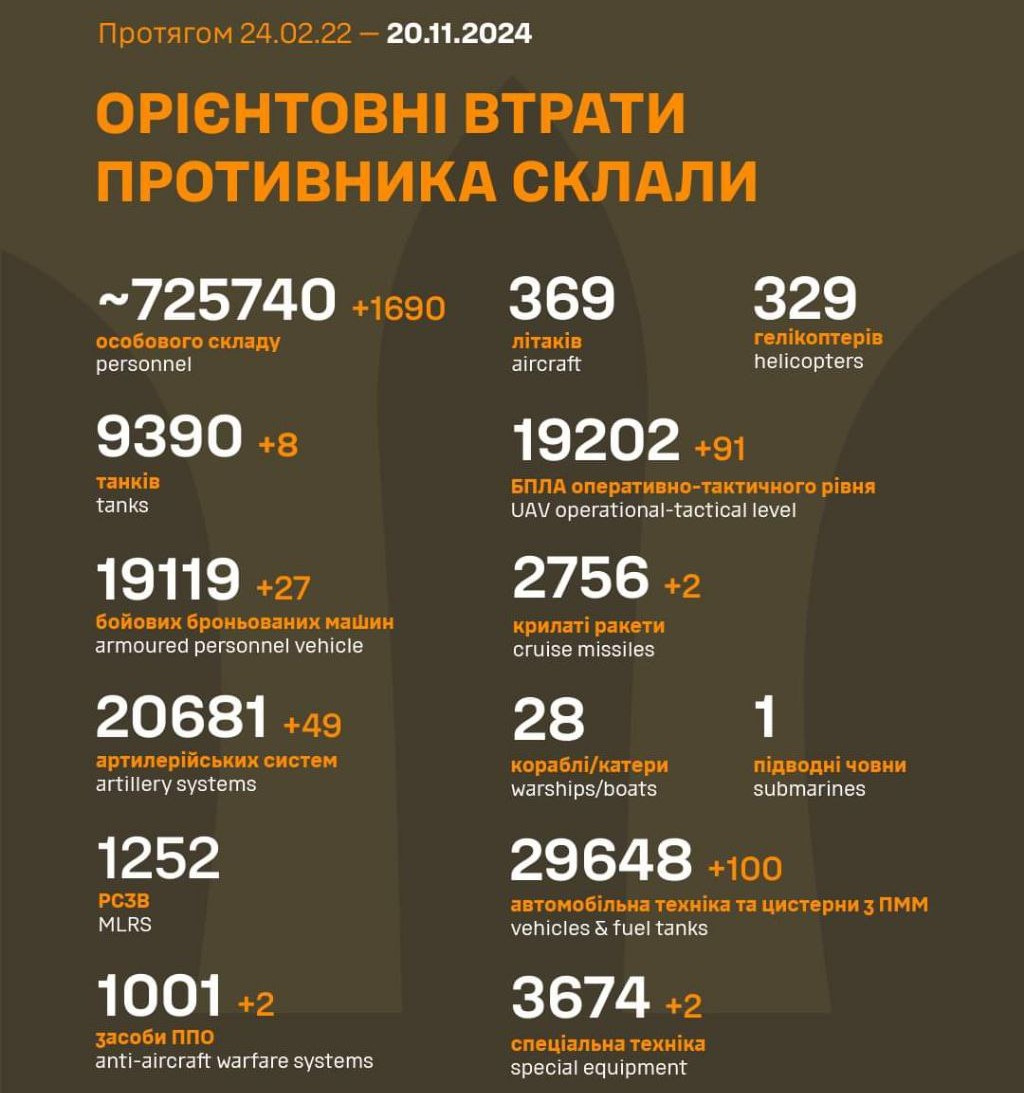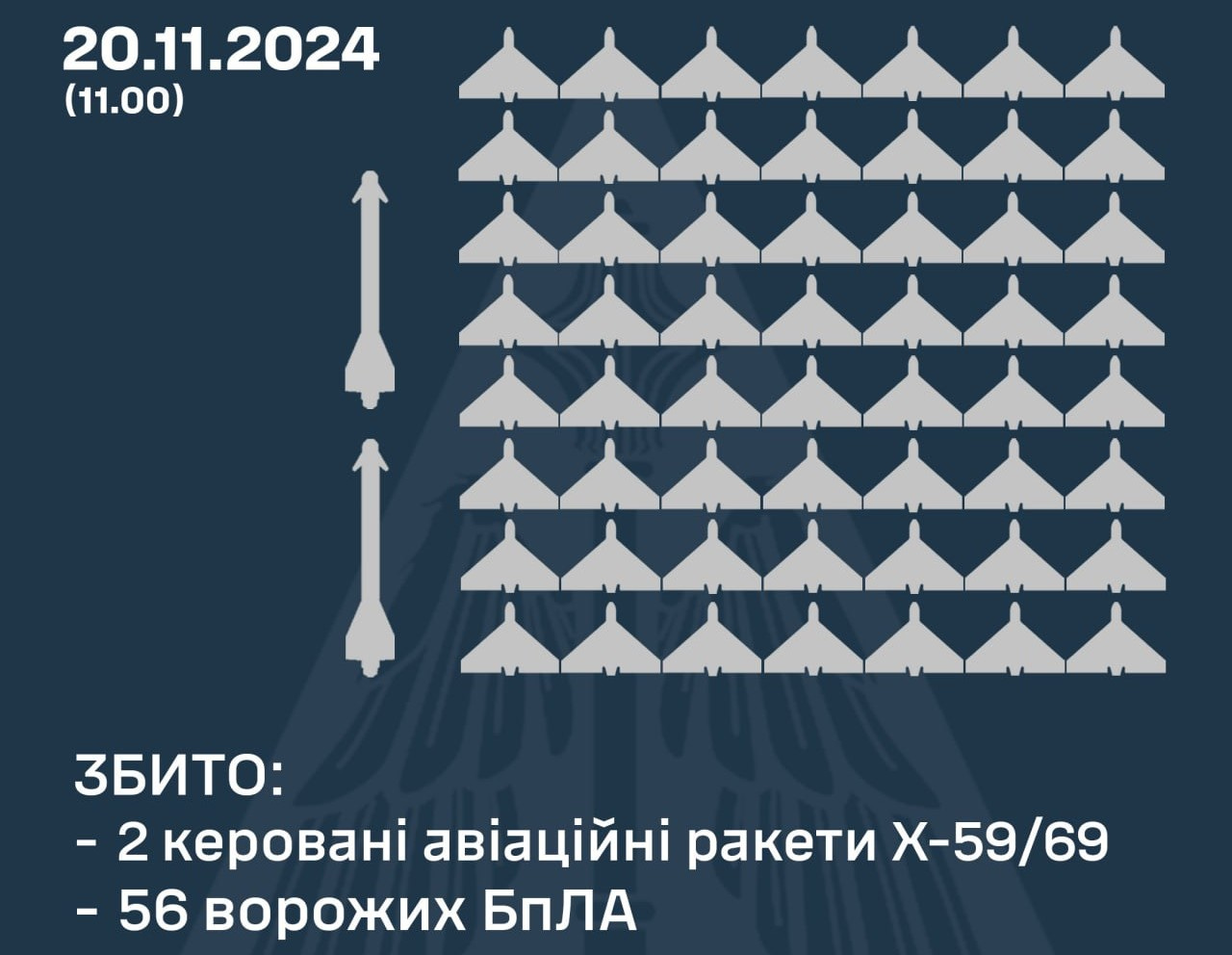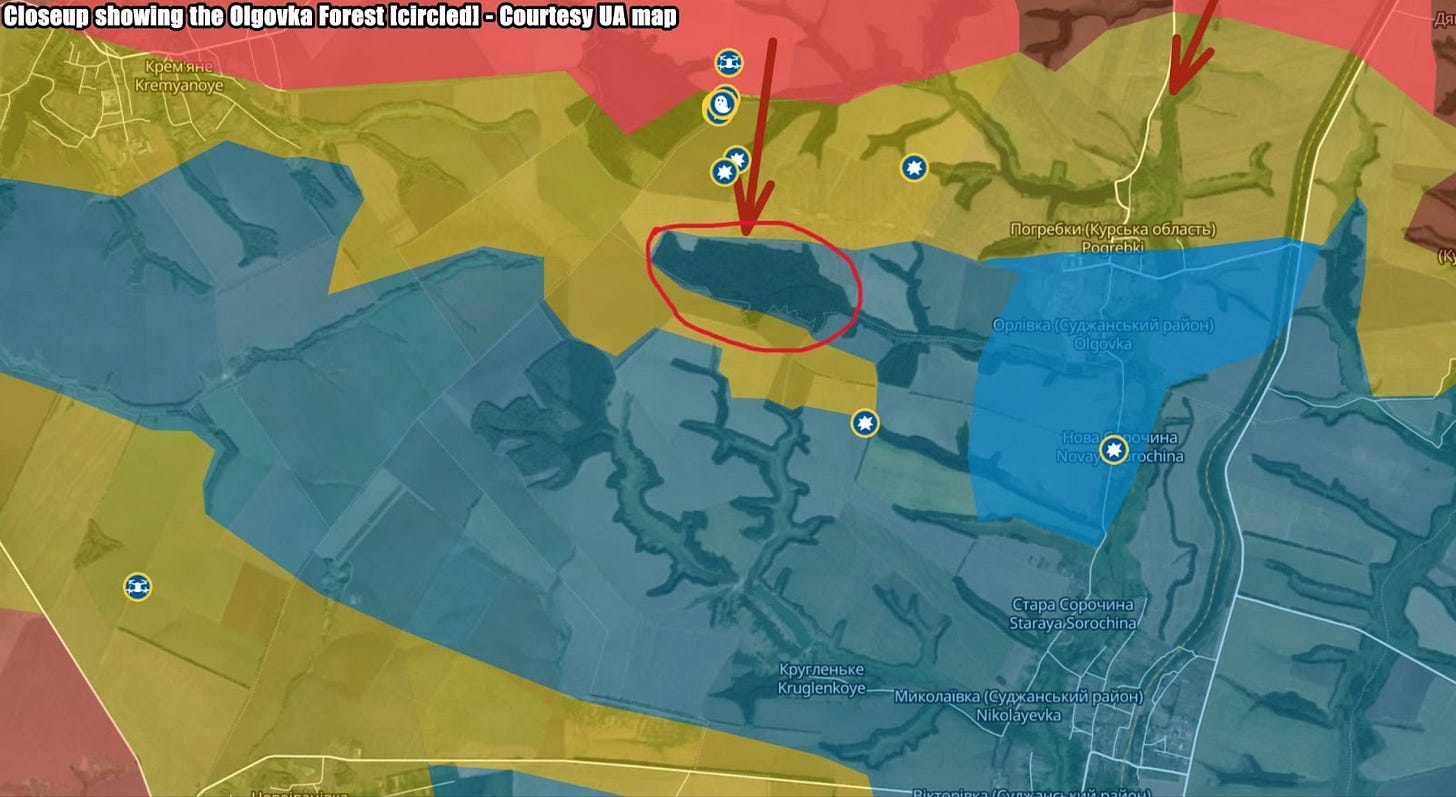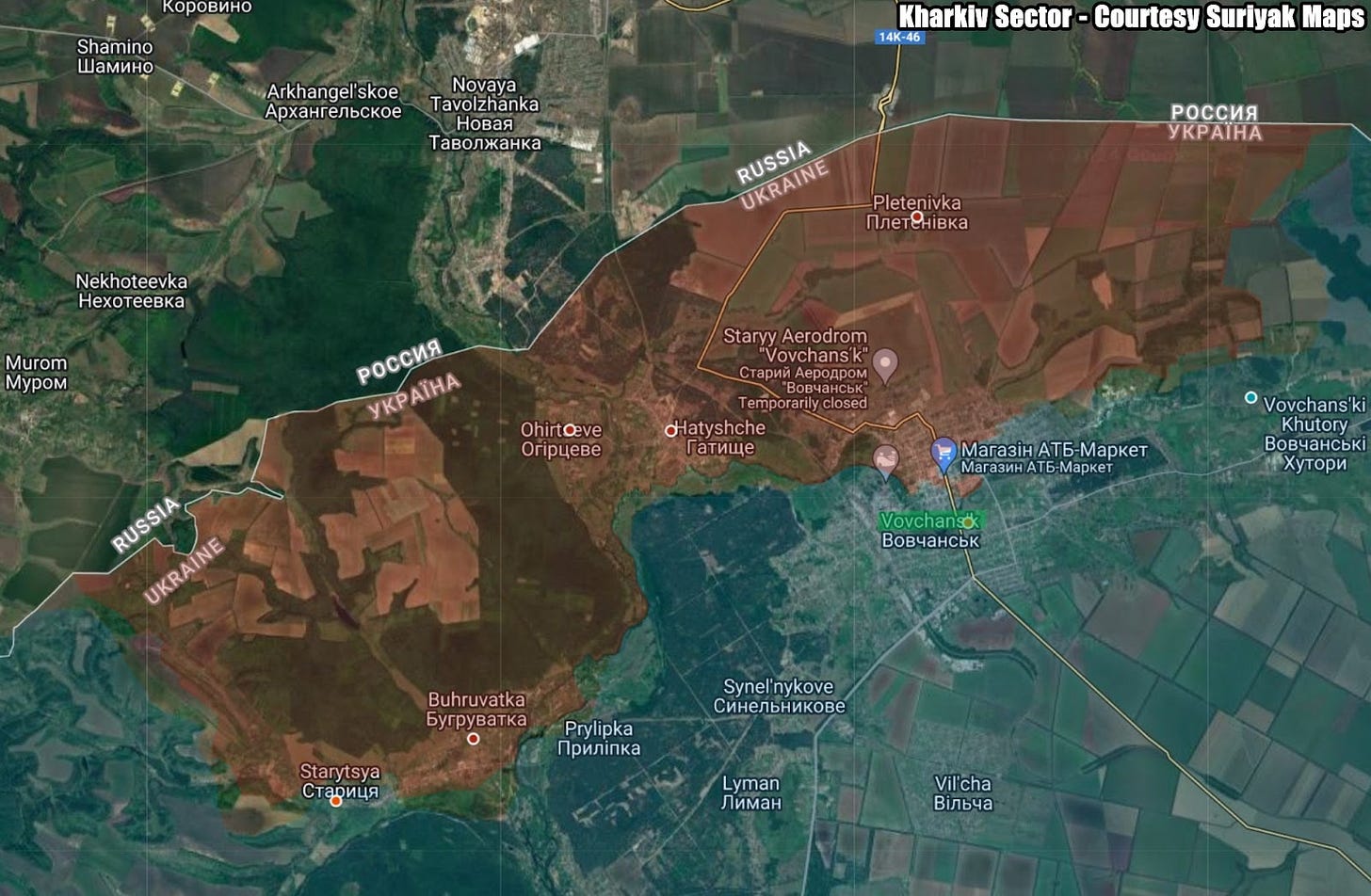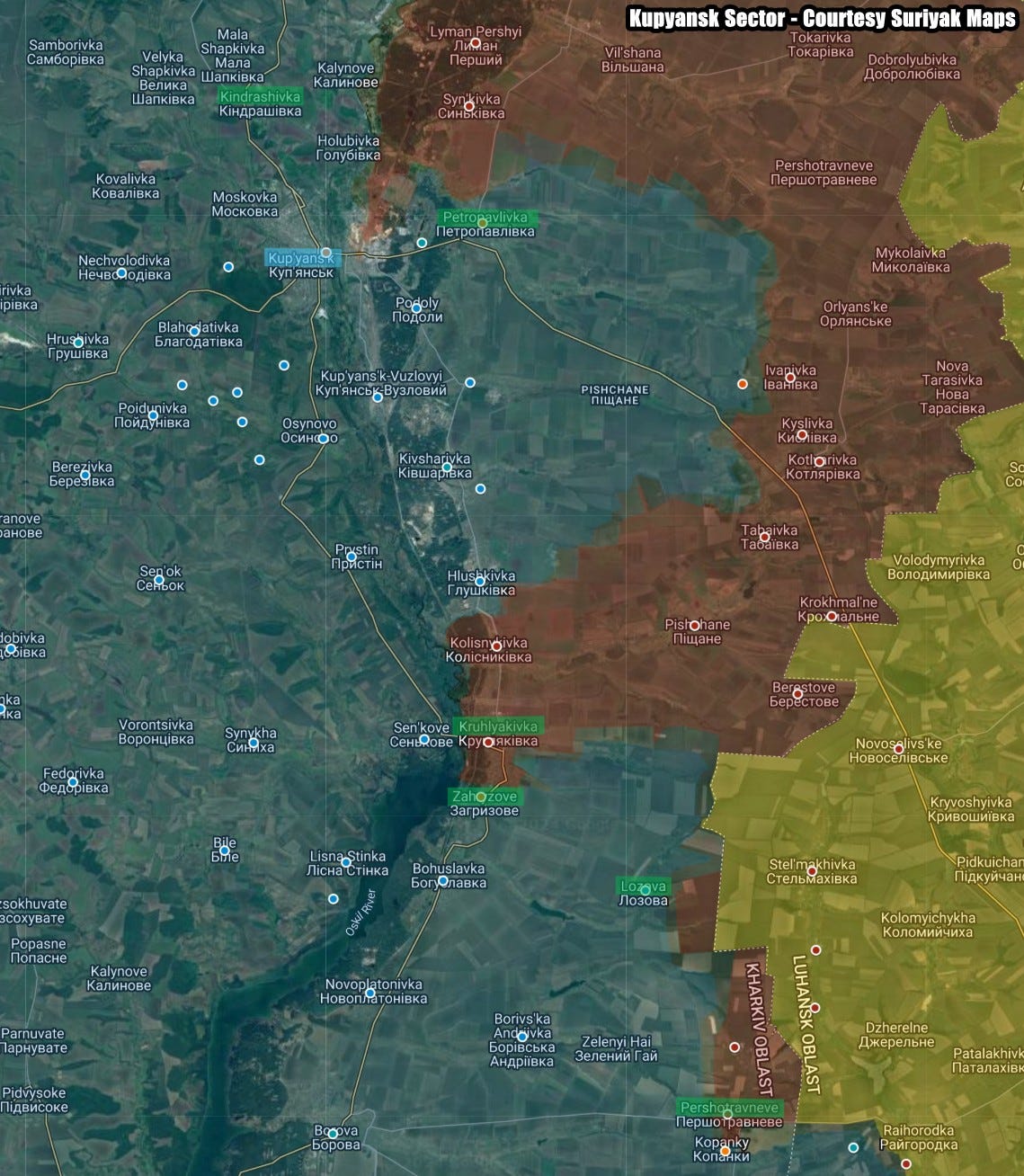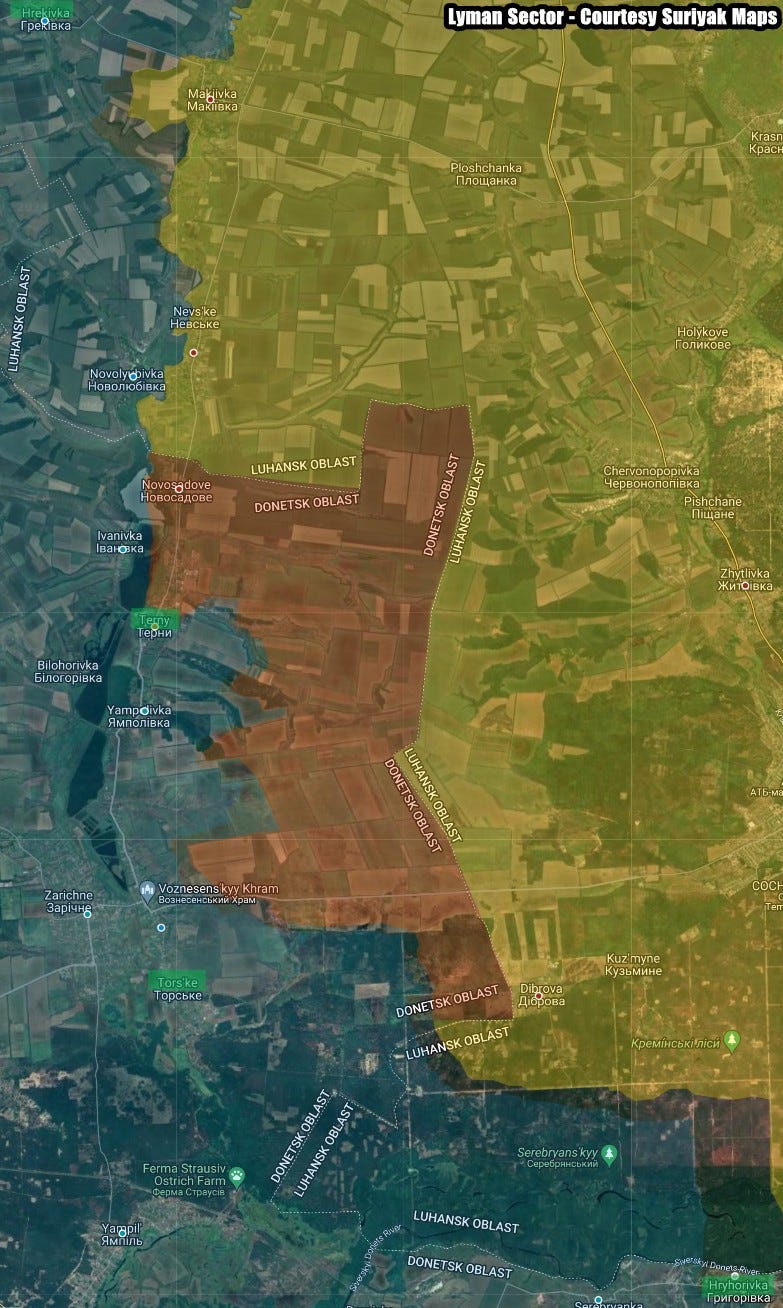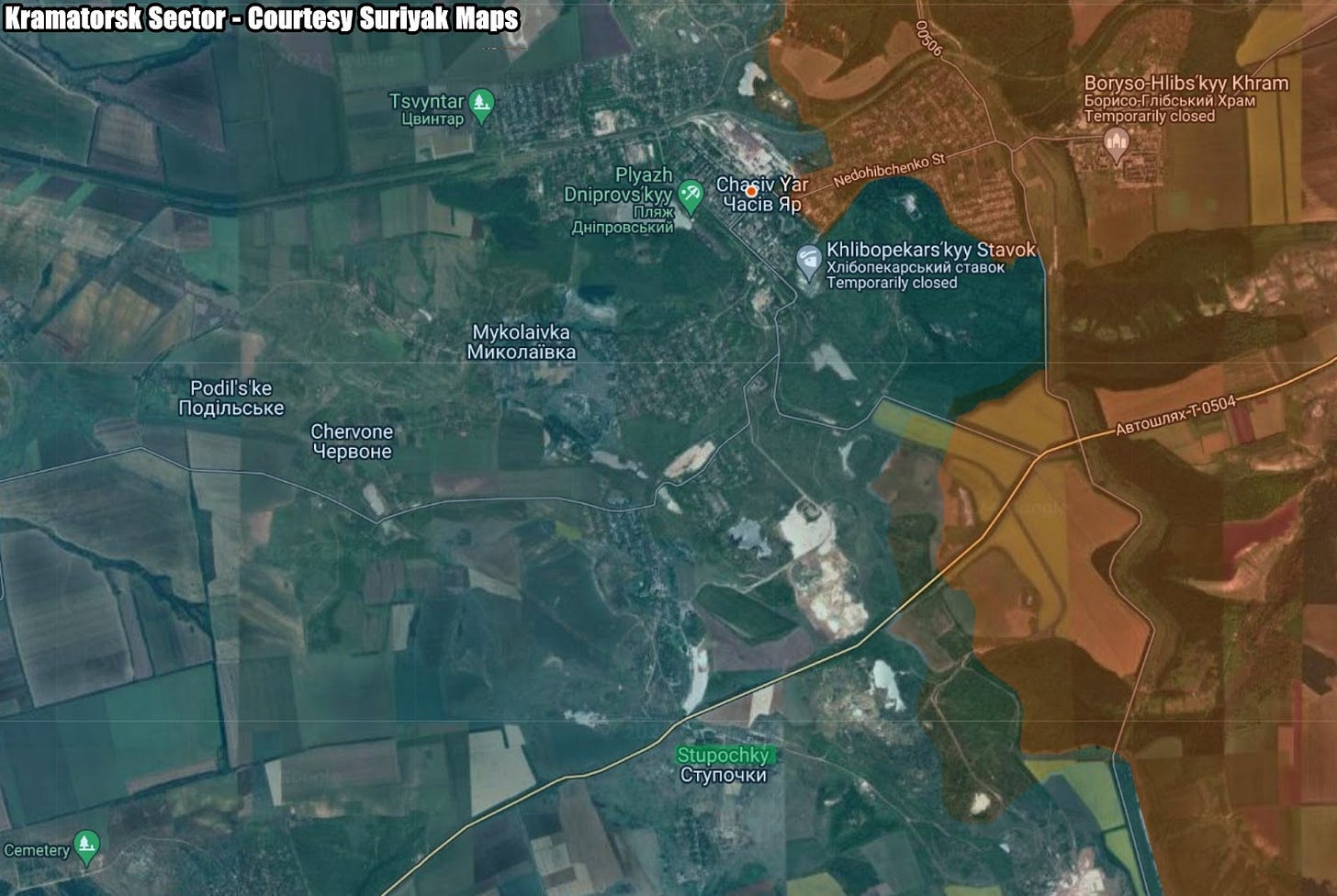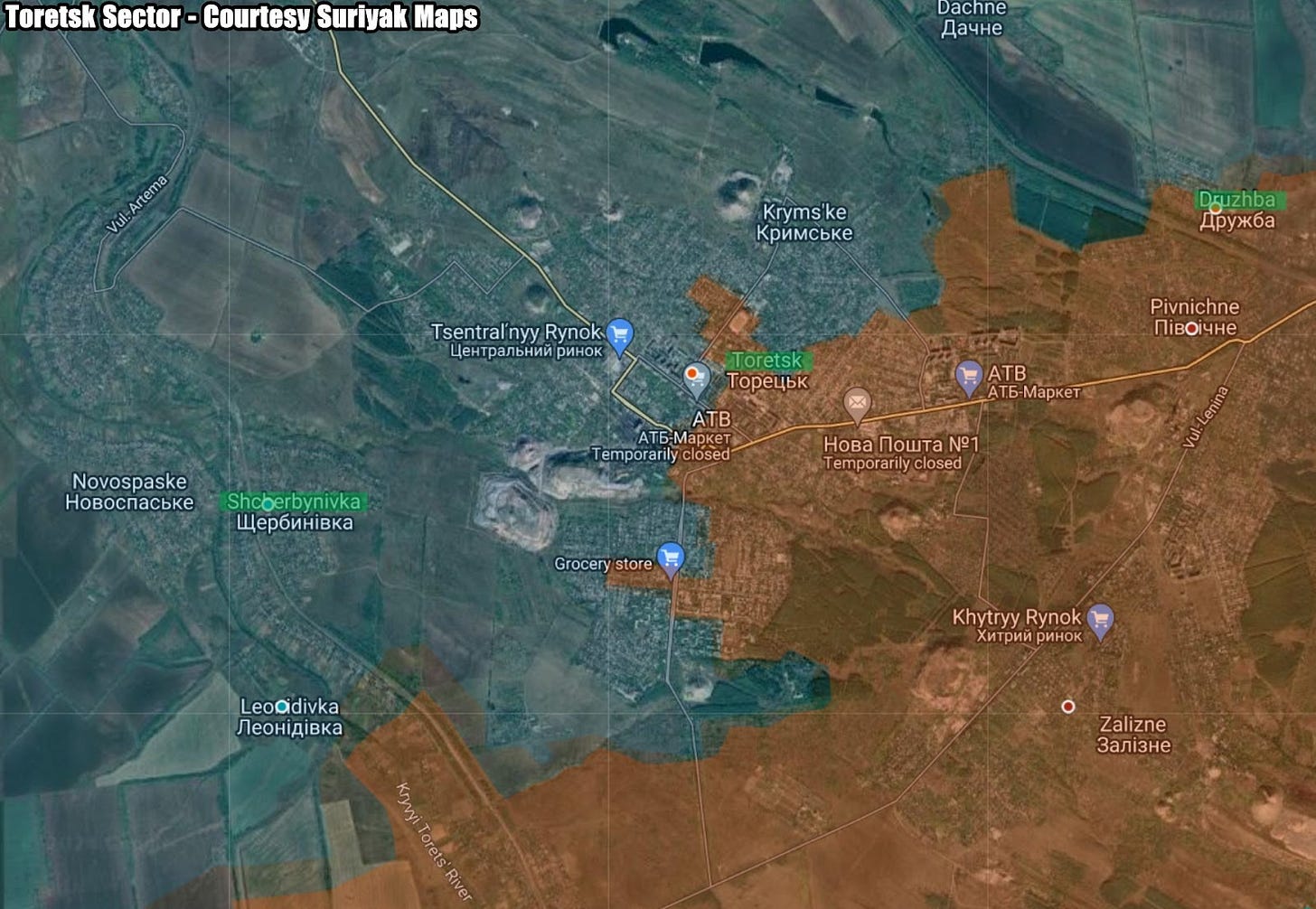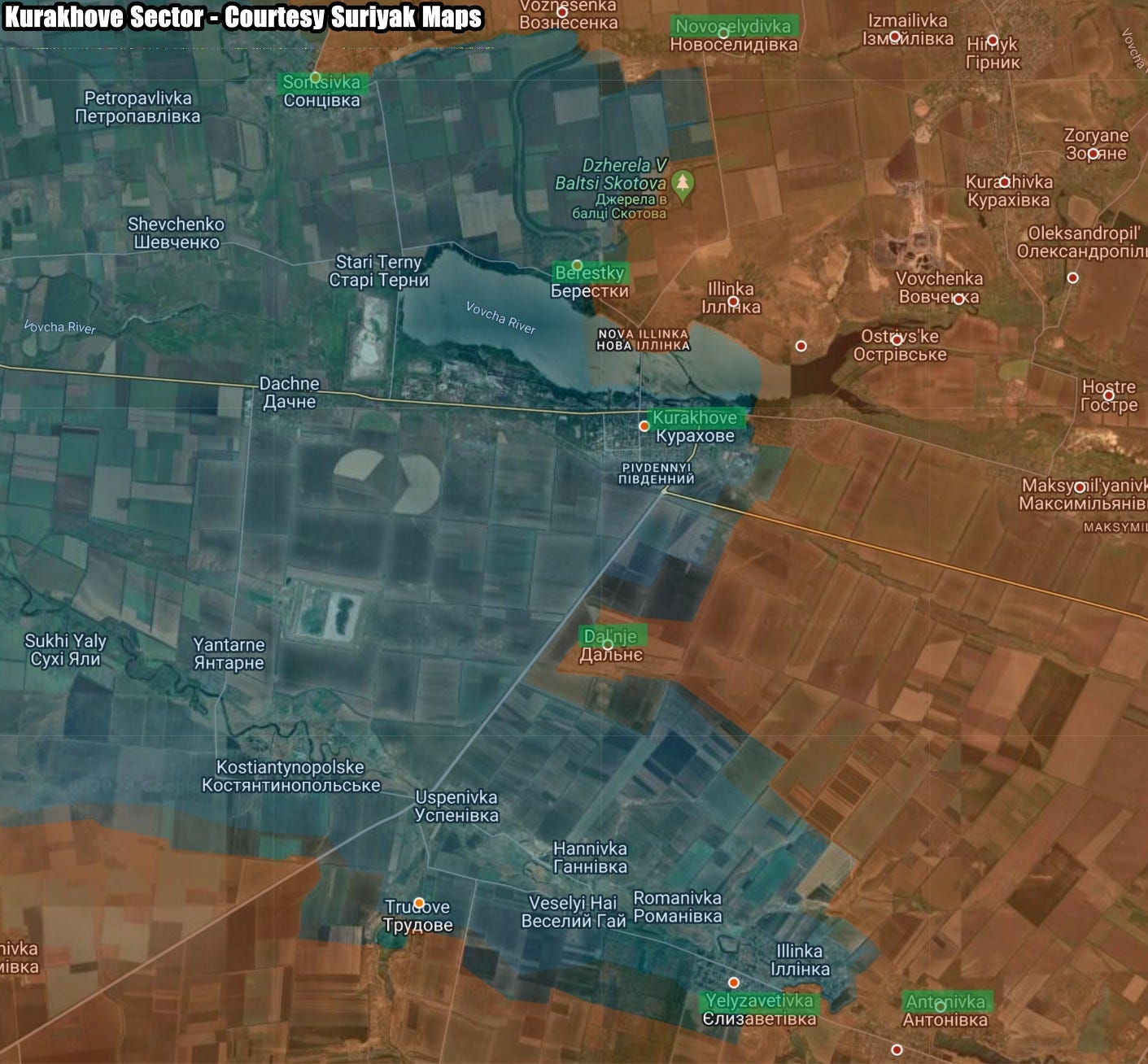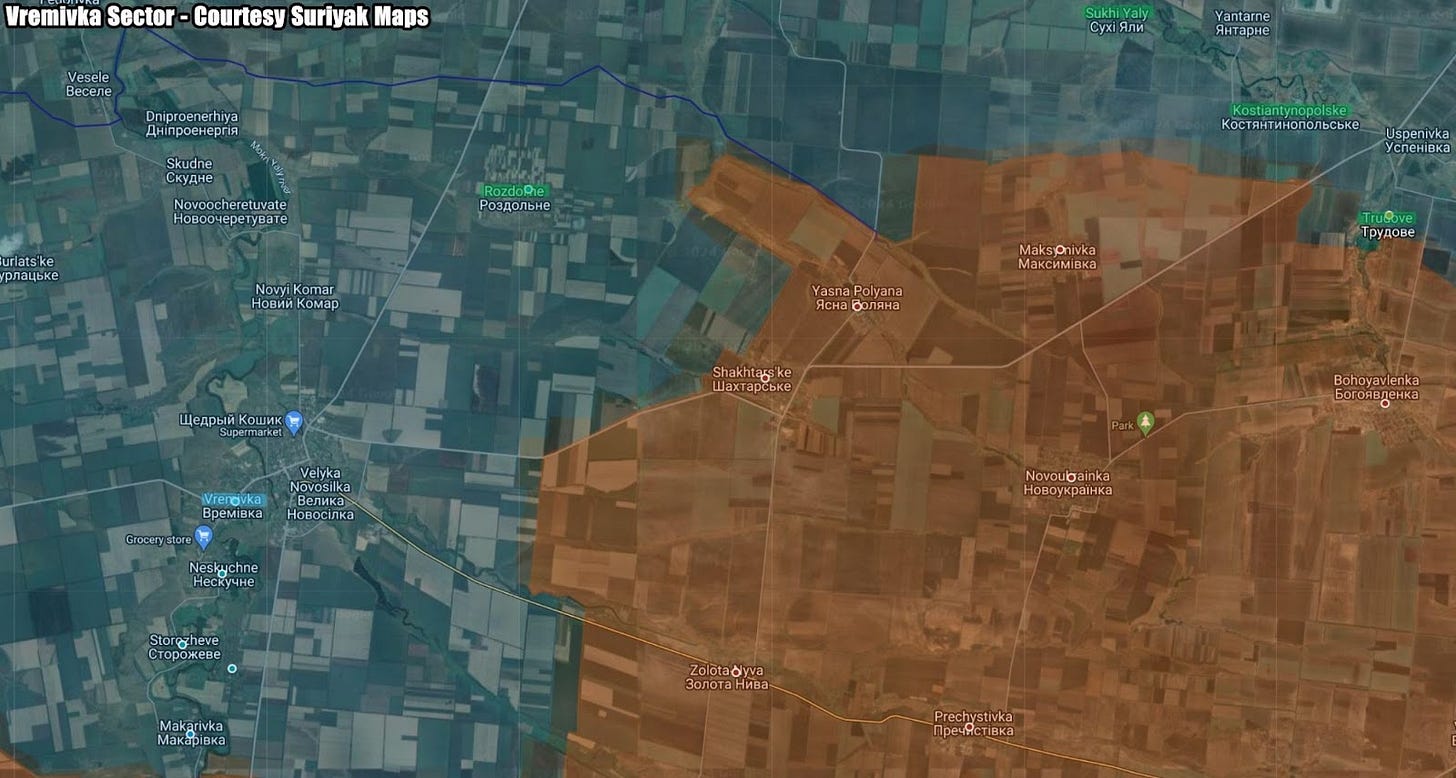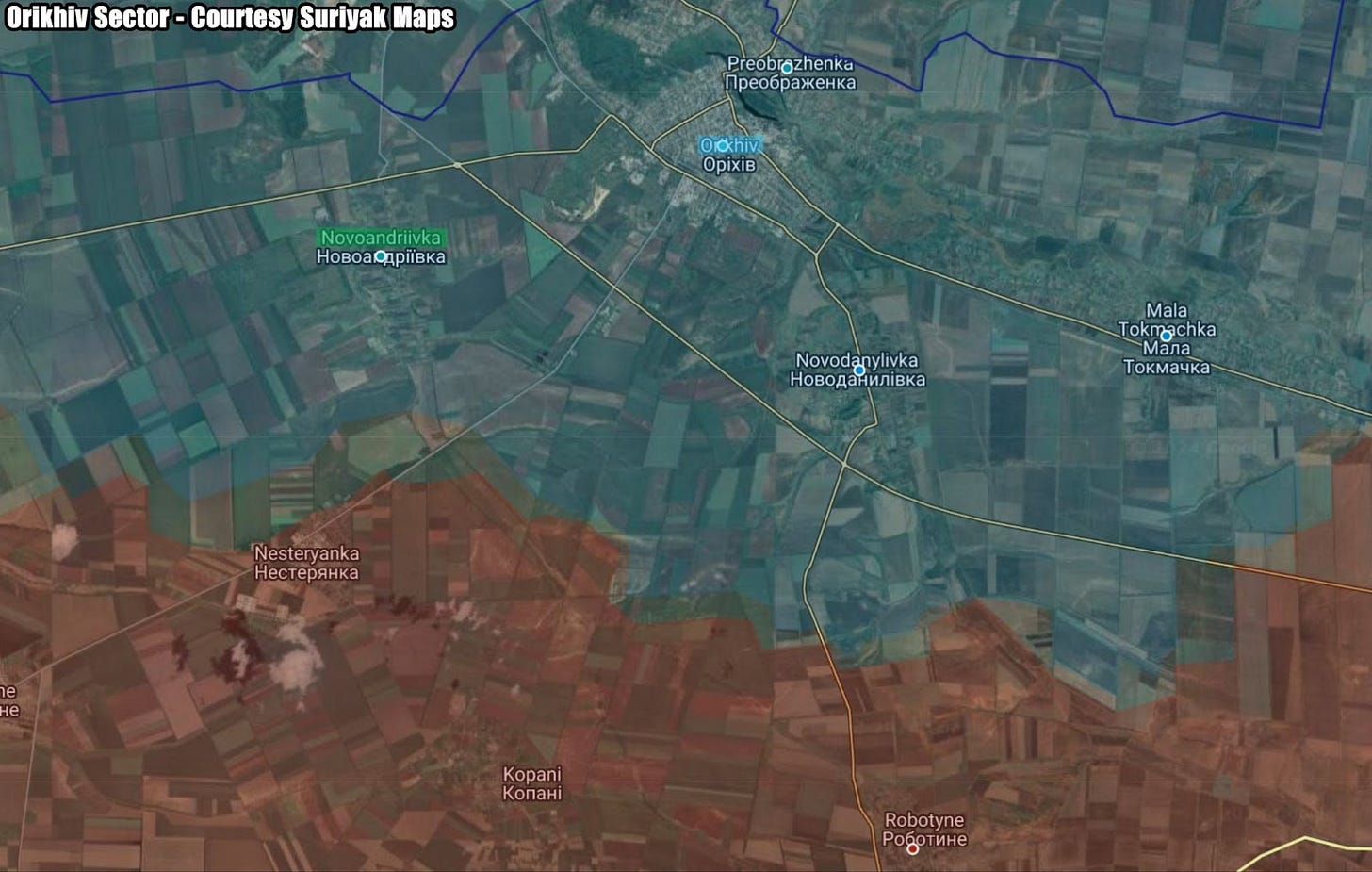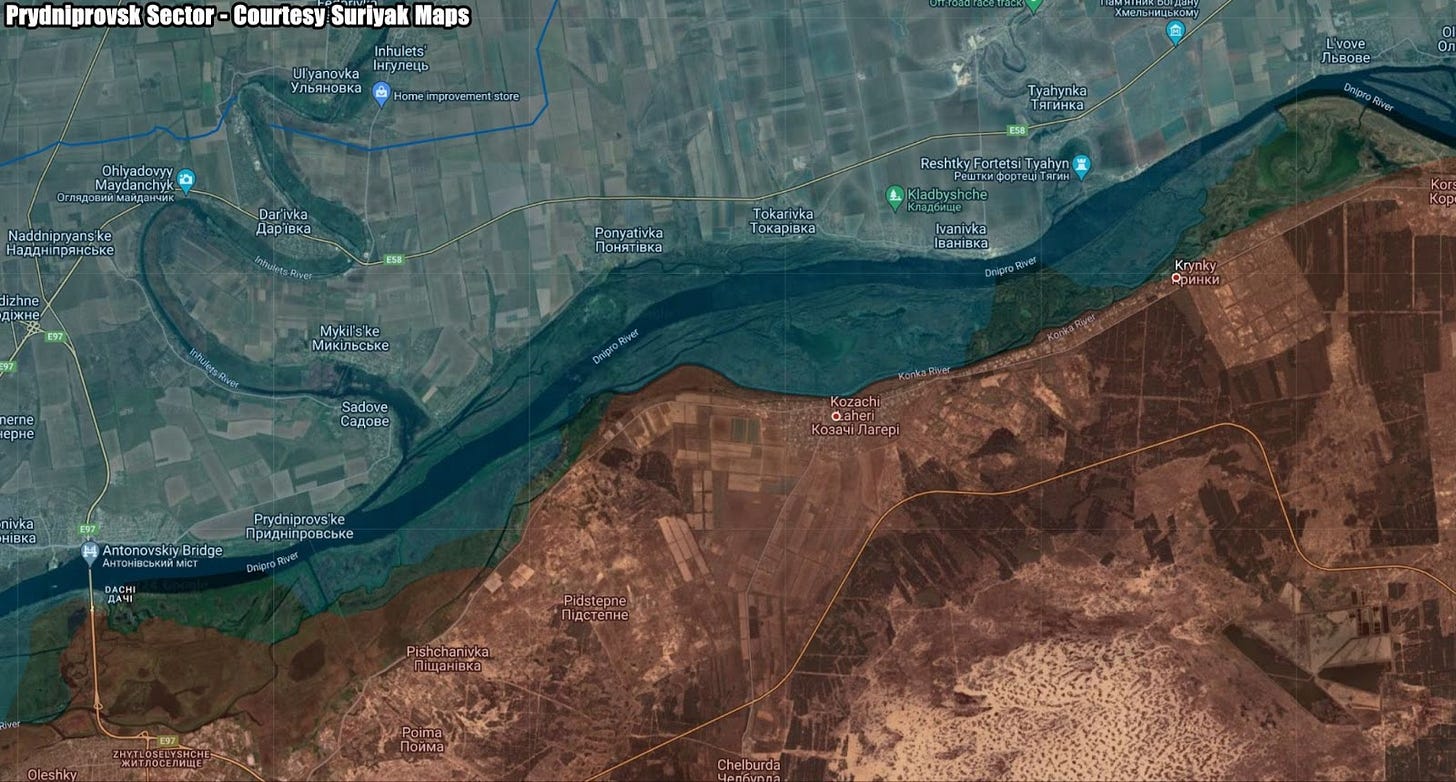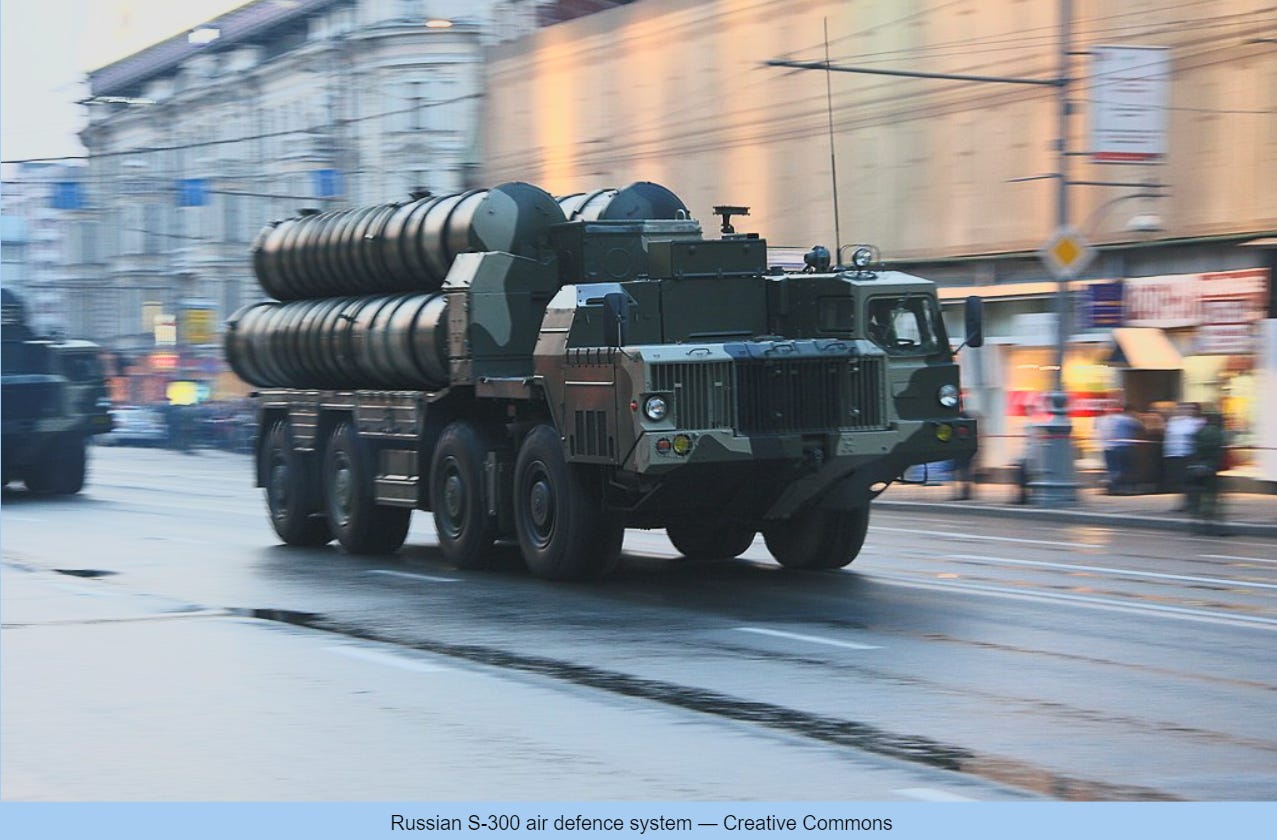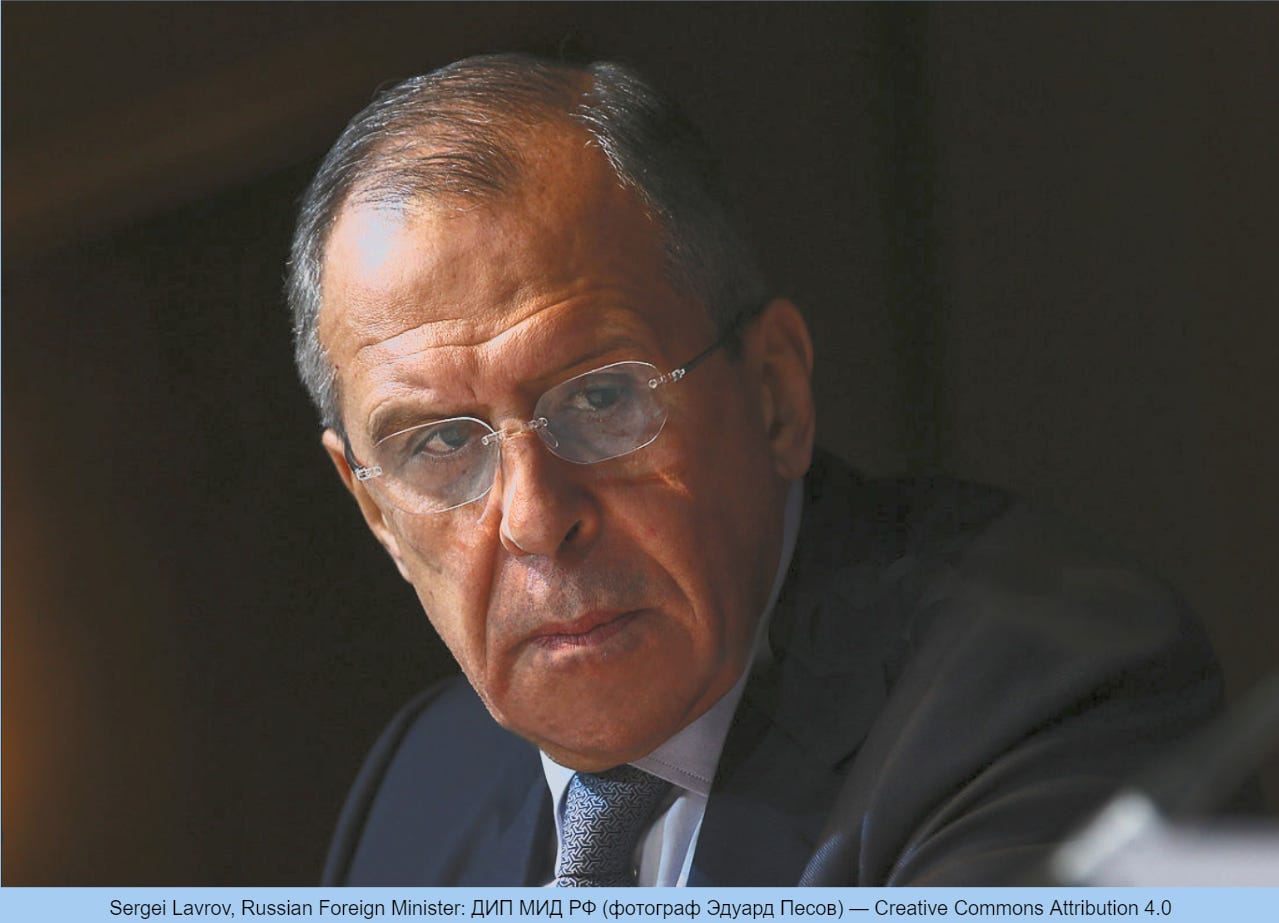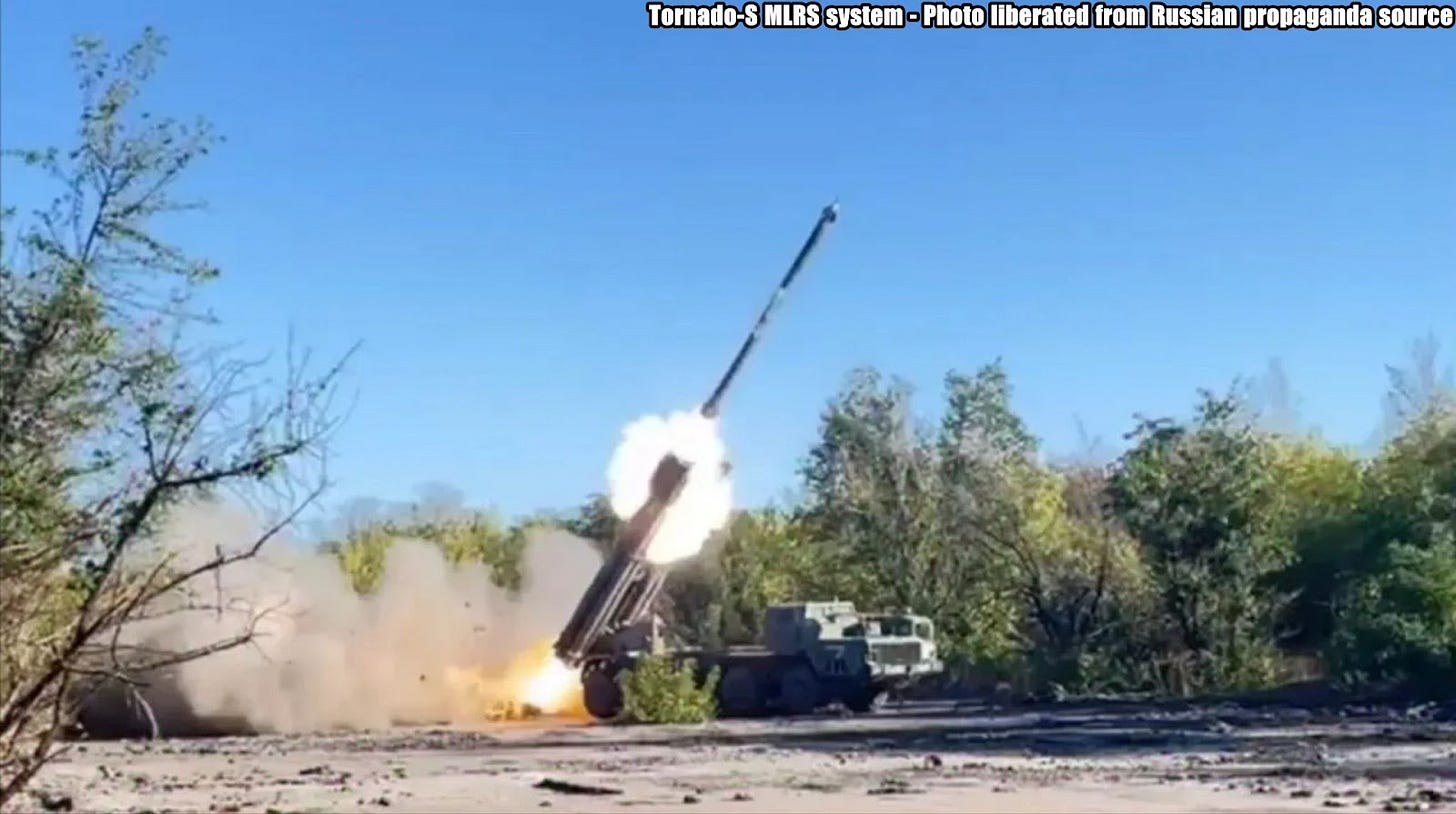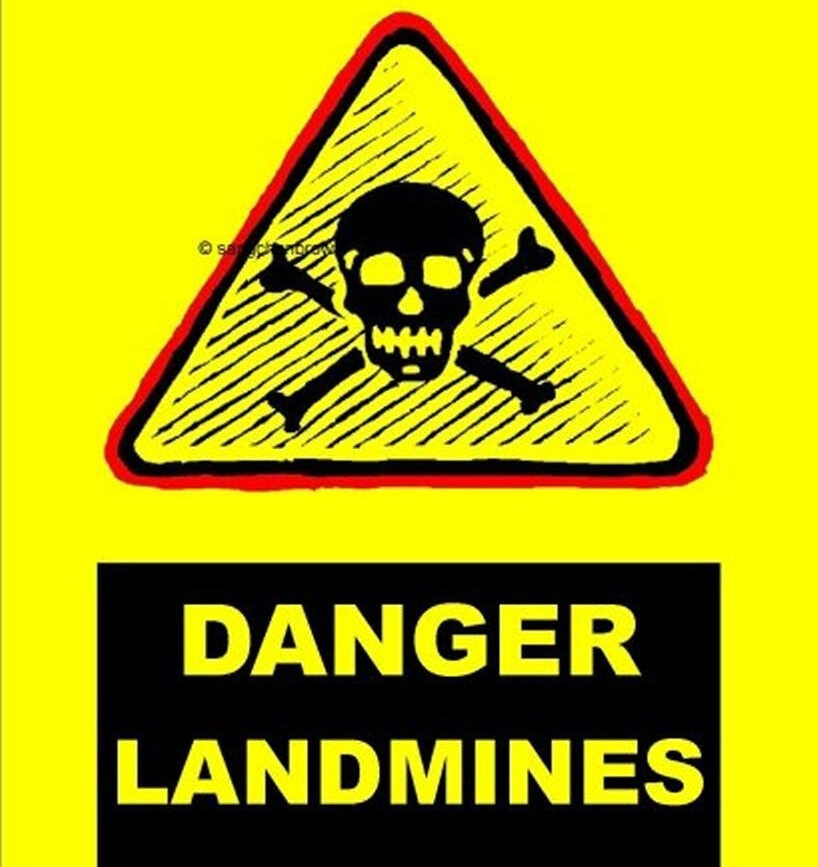Slava Ukraini! In early 2022 I began a Telegram channel aggregating news from a number of sources daily on the war in Ukraine. In June 2023 I began providing a daily draft for the Ukraine War Brief Podcast collecting news from over 70 sources daily, much of which formed the basis of the script. While the Podcast no longer exists I have continued to make this Brief available for my followers here on Substack for those who wish to keep up with the news from the war. A version of this Brief will also be made available on The People’s Media Substack for those who should choose to subscribe there.
All the latest news on the Russo-Ukraine War 6 days per week
ALONG THE CONTACT LINE
GSAFU Morning Report
The General Staff of the Armed Forces of Ukraine in its Operational Information update at 22:00 on Nov 19 stated that day 1001 of the full-scale invasion of the Russian Federation against Ukraine was about to begin.
During the past day, 130 combat engagements took place. Over the past 24 hours, the enemy carried out 51 air strikes, 600 drone strikes and more than 3,500 artillery strikes across the positions of Ukrainian forces.
At the same time, Ukrainian soldiers continue to inflict losses in manpower and equipment on the occupying troops, exhausting the enemy along the entire front line and continue to disrupt the plans of Russian occupiers to advance deep into the territory of Ukraine.
Air Force Daily Report
On the night of Nov 20, 2024 (from 7:30 p.m. on Nov 19), the enemy attacked Kharkiv Oblast with a S-300 anti-aircraft guided missile from Belgorod Oblast, and 5 X-59/69 air guided missiles against Dnipropetrovsk Oblast, Chernihiv Oblast, and Sumy Oblast. Also, the occupiers hit with guided air bombs and released 122 attack UAVs of the "Shahed" type and unmanned aerial vehicles of an unknown type from the regions of Kursk, Orel, Primorsko-Akhtarsk - Russian Federation.
The air attack was repulsed by aviation, anti-aircraft missile forces, electronic warfare units, mobile fire groups of the Air Force and the Defense Forces of Ukraine.
As of 11 a.m., the downing of two Kh-59/69 guided air missiles and 56 enemy UAVs in Kyiv, Cherkasy, Chernihiv, Poltava, Kirovohrad, Zhytomyr, Khmelnytskyi, Sumy, Mykolaiv, Kherson, Zaporizhia, Dnipropetrovsk, Donetsk, and Kharkiv regions was confirmed.
As a result of active countermeasures, 58 enemy UAVs were lost in various regions. Six drones left the airspace of Ukraine: five — to Russia, one — to Belarus.
The Russian Border Incursion
The Institute for the Study of War (ISW), a US based think tank, in its Nov 19 Russian Offensive Campaign Assessment reported that Russian forces recently advanced in the main Ukrainian salient in Kursk Oblast amid continued fighting in the area on Nov 19. Geolocated footage published on Nov 19 indicates that Russian forces recently advanced northeast of Nizhny Klin (southeast of Korenevo).
Russian milbloggers claimed that Russian forces advanced near the Olgovka forest (southeast of Korenevo); near Olgovka and Kremyanoye (both east of Korenevo); and on the eastern outskirts of Plekhovo (south of Sudzha). ISW has not observed confirmation of these claims, however. Russian forces conducted offensive operations near Novoivanovka (southeast of Korenevo) and Sverdlikovo (northwest of Sudzha).
Russian sources claimed that Ukrainian forces counterattacked near Novoivanovka, Darino (southeast of Korenevo), and Plekhovo. Russian milbloggers continued to claim that Ukrainian forces are unsuccessfully trying to break out of a Russian encirclement near the Olgovka forest.
The spokesperson for the Ukrainian commandant's office in Sudzha reported on Nov 19 that Russian tactics have somewhat changed in Kursk Oblast and that Russian forces are starting to attack at nighttime as opposed to early in the morning.
The Khortytsia operational-strategic group
(Responsible for the northeastern part of Ukraine. )
Kharkiv Sector: Over the last day Ukrainian Defense Forces repelled 5 Russian attacks in the area of Vovchansk.
Kupyansk Sector: Russian Forces carried out 11 offensive actions against Ukrainian defensive positions near Kindrashivka, Petropavlivka, Kruhlyakivka, Zahryzove and Lozova and Pershotravneve.
Lyman Sector: Russian Forces carried out 14 offensive actions against Ukrainian defensive positions near Hrekivka, Terny, Torske and Hyrhorivka.
Siversk Sector: In this sector, over the last day, there has been no significant change in the combat environment.
Kramatorsk Sector: Russian forces carried out 1 unsuccessful offensive action against Ukrainian defences in the vicinity of Stupochky.
Toretsk Sector: Russian forces carried out 8 offensive actions with air support near Druzhba, Toretsk and Shcherbynivka.
The Tavria operational-strategic group
(Responsible for the central-eastern and southeastern part of Ukraine.)
Pokrovsk Sector : Over the past day, Russian Forces carried out 37 offensive actions against Ukrainian defensive positions near Myrolyubivka, Novotoretske, Promin, Lysivka, Dachenske, Petrivka, Pustynka. Yuriivka and Pushkine.
Kurakhove Sector: Over the last day in this district Russia conducted 2 offensive actions in the vicinity of Novoseldydivka, Sontsivka, Berestky, Kurakhove, Dalnje, Yelyzavetivka and Antonivka. 1 engagement continues.
Vremivka Sector: Russian forces made 15 attempts to break through Ukrainian defences in the vicinity of Novodarivka [not shown on map] Rozdolne, Sukhi Yaly, Kostiantynopolske and Trudove. 4 engagements are ongoing.
Orikhiv Sector: In this sector, over the last day, Russian forces made 1 attempt to dislodge Ukrainian units from their positions near Novoandriivka.
The Odesa operational-strategic group
(Responsible for Kherson, Qırım, (also known as Crimea) and the Black Sea.)
Prydniprovsk Sector: In this sector, over the last day, there has been no significant change in the combat environment. Russian forces made 2 unsuccessful attempts to dislodge Ukrainian units from their positions on the left bank of the Dnipro.
TEMPORARILY OCCUPIED TERRITORIES
Nothing major to report.
THE HOME FRONT
Russia spreads fakes on behalf of Ukraine's Defence Intelligence, suggesting "massive attacks" across Ukraine
Reports of purported "particularly massive" missile and bomb assaults on Ukrainian cities, which are circulated on the behalf of Ukraine’s Defence Intelligence via social networks and messengers, are Russian fakes. Ukrainska Pravda reports citing Ukraine’s Defence Intelligence on Telegram.
According to reports, an announcement was sent out via messenger apps and social networks on behalf of Ukraine's Defence Intelligence about the threat of a "particularly massive" missile and bomb strike on Ukrainian cities on 20 November.
"If force is not an option for subduing Ukrainians, the enemy uses intimidation and psychological pressure on the society. Please remain vigilant and steadfast. Do not ignore air-raid warnings; it is safer to wait [through the attacks] in the shelter. However, we advise you not to panic."
The department asserts that this is a fake, as it comprises grammar mistakes typical of Russian information and psychological operations. Defence Intelligence urged citizens to trust only official sources of information and to remain calm.
RUSSIAN WORLD
Ukraine Fires UK Storm Shadow Missiles at Russia for First Time
Ukraine’s armed forces fired British cruise missiles at military targets inside Russia for the first time, Bloomberg reports citing a Western official familiar with the matter.
The strikes using Storm Shadow missiles were approved in response to Russia deploying North Korean troops in its war against Ukraine, a move by Moscow that the UK government considered to be an escalation of the conflict, according to the person who spoke on condition of anonymity because of the sensitivity of the matter.
Village in Northwestern Russia Evacuated After Ukrainian Drones Attack Missile Depot
A wave of Ukrainian drone strikes across Russia overnight prompted the evacuation of a village near a missile depot in the northwestern Novgorod region, officials said Wednesday. The Moscow Times writes.
Air defence systems destroyed “several” drones in the village of Kotovo, located around 680 kilometres (420 miles) north of the Ukrainian border, according to Novgorod region Governor Andrei Nikitin. No one was injured in the attack, he said.
“Residents of the village have been relocated to temporary accommodation centres in the town of Okulovk. They are receiving hot meals and beds,” Nikitin wrote on Telegram, referring to a nearby town.
In an accompanying video, he said that elderly and disabled residents were hospitalised for monitoring out of an abundance of caution.
Kotovo is home to the 13th arsenal of the Russian military’s main missile and artillery directorate. Residents told media in September that some of them began leaving the town following Ukrainian strikes on similar targets in other regions.
Russia’s Defense Ministry said Wednesday that its air defence systems intercepted 44 drones overnight, including 20 over the Novgorod region.
Andriy Kovalenko, head of Ukraine’s national security and defence council’s disinformation countermeasures centre, confirmed the attack on the Kotovo arsenal. He claimed the facility stored a range of Russian missiles, including S-300 and S-400 systems.
INTERNATIONAL NEWS
Russian officials threaten US over long-range strikes, allude to nuclear doctrine changes
Russian Foreign Minister Sergey Lavrov said on Nov. 19 that Moscow "will respond accordingly" to Washington's permission for Ukraine to strike Russian soil with U.S. weapons. The Kyiv Independent reports.
Speaking at the G20 summit in Rio de Janeiro, Lavrov referred to Russia’s updated nuclear doctrine, which permits nuclear retaliation for attacks by non-nuclear states supported by nuclear powers.
When asked during the summit if the U.S. had authorised Ukraine to use long-range weapons to target Russia, Lavrov responded, "I don’t know whether it’s true or not. We are focused on ensuring our security."
"We have already stated everything necessary to those considering this, officially. The president said it, and now it’s confirmed in an official document," he said, according to TASS.
On Nov. 19, Russian President Vladimir Putin approved an updated nuclear deterrence policy that expands the conditions for a nuclear strike.
The revised doctrine outlines scenarios that could justify a nuclear strike, suggesting that this could include "aggression against the Russian Federation and its allies by a non-nuclear state with the support of a nuclear state" and large-scale non-nuclear attacks.
Dmitry Medvedev, the deputy chairman of Russia's Security Council known for his provocative and often extreme outbursts, also weighed in, threatening to use weapons of mass destruction against Ukraine and NATO.
According to the official, the updated doctrine could qualify Ukraine's use of NATO-supplied missiles in Russia as a trigger for "a mass retaliatory strike with weapons of mass destruction on Kyiv and main NATO facilities."
"This is already World War III," Medvedev wrote on his Telegram channel. Between swigs of vodka, Grumpy opines…
Starmer drops hint on Stormshadows after Ukraine fires US missiles
It is only a matter of time before British-made Storm Shadow missiles are used by Zelensky against Russia, the PM seemed to suggest, The Times wrote.
Sir Keir Starmer was midway across the Atlantic en route to the G20 summit in Rio de Janeiro when The outgoing Biden administration announced it had authorised the use of long-range ATACMS missiles against targets in Russia.
The prime minister and his most senior aides, gathered at the front of the aircraft, were already aware of Biden’s decision, which had been taken three days earlier — but they were not prepared for the news to leak so soon.
Aides insisted that the US decision did not necessarily have a bearing on Storm Shadow as it has a different specification to the ATACMS system, while Starmer himself said that he was not going to get into “operational details”.
In private a senior government source said that Starmer’s position was in fact straightforward — he wants to allow Ukraine to use the weapons as it sees fit for its self-defence. Behind the scenes, Britain has been pressing the US on the issue for months.
The US initially withheld permission for its technology to be used for Storm Shadow missiles in Russia because it was concerned about further escalating the conflict. Biden was said to be particularly reticent, despite pressure from other senior figures in his administration.
The “turning point”, according to a Foreign Office source, came when Russia drafted North Korean soldiers into the conflict, which was viewed as a “major escalation”. Sign-off by the US is now expected, especially given that Ukraine has now used long-range US missiles against targets in Russia.
The months of deliberations mean that any element of surprise is gone.
Previously, the UK’s approach has been to announce the deployment of Storm Shadows after they have been used in the battlefield to maximise their impact.
A Downing Street source said: “There are very good operational reasons why we need to be cautious in what we say. The last thing we want to do is hand Putin a strategic advantage on the battlefield.”
Nonetheless, by Tuesday morning, Starmer was beginning to set aside caution, hinting that it was just a matter of time before Storm Shadow missiles could be used in Ukraine.
“We must ensure Ukraine has what it needs for as long as it needs to win this war,” he said. “[But] I’m not going to go into operational matters, because there’s only one winner if I do that, and that is Putin.”
Senior government sources said that the change of language from Starmer had been deliberate and hinted that the previous objections to the use of Storm Shadows by the Americans had now been dropped.
This is an approach mirrored by the Ukrainians. Following reports of the US policy shift, Zelenskyy said that “such things are not announced”.
“The missiles will speak for themselves,” Zelenskyy added.
MILITARY & TECH
Russia shows new Tornado-S rocket system in combat action
Russia has released footage showcasing its latest Tornado-S Multiple Launch Rocket System (MLRS), a 300mm artillery platform equipped with guided rockets it claims are designed for increased accuracy. Defence Blog reports.
Developed as an upgrade to the older MB-30 Smerch system, the Tornado-S features precision-guided munitions with modified flight control systems, making it Russia’s most advanced multiple rocket launcher to date.
The Tornado-S system utilises several new rocket types: the 9M542, 9M544, and 9M549. With a range of up to 120 kilometres, the 9M544 and 9M549 rockets carry cluster warheads, while the 9M542 variant is equipped with a 150 kg high-explosive fragmentation warhead. These rockets are distinguished by small flight-control wings at the front, allowing for mid-course adjustments that improve targeting accuracy.
Unlike traditional unguided munitions, the Tornado-S rockets are designed for precision strikes on operational targets, similar to the U.S.-made HIMARS system.
Russian state media has drawn comparisons between Tornado-S and HIMARS, positioning the system as a direct competitor.
The guidance systems in the Tornado-S rockets reportedly rely on commercially available microchips, a feature aimed at simplifying production despite ongoing sanctions. Analysis of recovered components from Tornado-S munitions shows the use of civilian-market electronics, which, according to experts, could mitigate the impact of international trade restrictions on Russia’s missile production.
US Approves Antipersonnel Mines for Ukraine.
The Biden administration approves the use of antipersonnel mines for Ukraine, undoing their own policy the Washington Post reports.
President Joe Biden has authorised the provision of antipersonnel land mines to Ukraine, two U.S. officials said, a step that will bolster Kyiv’s defences against advancing Russian troops but has drawn criticism from arms control groups.
The move comes in the wake of the White House’s recent authorization allowing Ukraine to use a powerful long-range missile system to strike inside Russia — part of a sweep of urgent actions the lame-duck Biden administration is taking to help Kyiv’s faltering war effort.
The Biden administration is deeply concerned about Russia’s assaults against Ukraine’s front lines in recent weeks and sees a pressing need to blunt the advance, officials said. The Pentagon believes that the provision of the mines is among the most helpful steps the Biden administration can do to help slow Russia’s attack, officials said.
One official said the type of antipersonnel land mine is “nonpersistent,” meaning that the mines self-destruct or lose battery charge to render them inactive within days or weeks, reducing the danger to civilians. The official said that Ukrainian policymakers had committed to not deploying the mines in densely populated areas. Arms control experts said that even nonpersistent mines pose a safety hazard.
The official and three others spoke about the decision on the condition of anonymity to candidly discuss sensitive internal White House deliberations.
“Russia is attacking Ukrainian lines in the east with waves of troops, regardless of the casualties that they’re suffering,” one of the officials said. “So the Ukrainians are obviously taking losses, and more towns and cities are at risk of falling. These mines were made specifically to combat exactly this.”
Use of the new mines would be limited to Ukrainian territory, with an expected focus on eastern Ukraine, one of the officials said. Russian forces have made significant advances in the Donetsk region and in recent months have gained territory at the fastest rate since 2022. Ukrainian troops have struggled to build strong defensive lines in the face of relentless drone sorties and small assault teams. Land mines could help them shore up their defences by slowing enemy troops and channelling them to areas where they can be targeted with artillery and rockets.
That’s it for today’s Brief folks if you would like to keep up with events in Ukraine daily please consider subscribing.
Feel free to share this update with your friends. Heroyam Slava!







